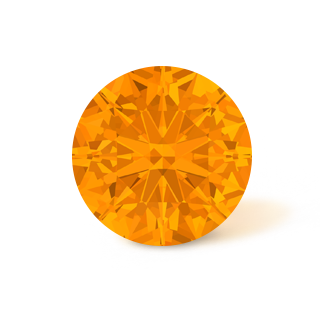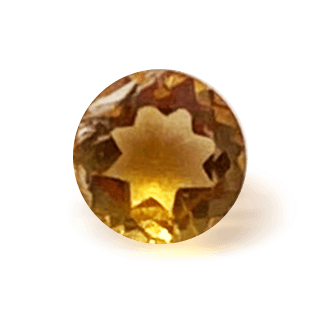All About Orange Sapphire: Types, Colors, Description, Origins & Details
What’s more lifelike, vibrant and intense than the color orange itself?
The timeless craze for this color is probably what makes Orange Sapphire such a special gemstone. Known to be a solar stone, Orange sapphire is world popular for its orange-golden color hues. And we’re surely that’s partly the reason you’re here too. We all love adorning Orange Sapphire jewelry but doesn’t it get you intrigued to know more about this September birthstone. That’s exactly why we are here with our Orange Sapphire education guide to address all the basic knowledge revolving around Orange Sapphire covering right from the fun history and benefits to the famous 4 C’s and properties. We’re here to get you more aware and help you make a better decision while buying Orange Sapphire jewelry.
Properties of Orange Sapphire
Hardness
Having a hardness rating of 9 on Moh’s scale, this September birthstone is known to withstand the wear and tear of regular use with much ease.
Transparency
Orange sapphire is known to range from transparent to opaque along with a refractive index of 1.76-1.77.
Luster
The luster of orange sapphire is known to range from vitreous to adamantine that is glass like. Probably what makes it so alluring!
Origin & History
How exactly did orange sapphire come into picture? What is the story behind it? Let’s get you glued with where it all started right away. Padparadscha sapphire which is a unique variety of orange sapphire combining a striking salmon pink color, was produced by Sri Lanka alone for quite some time dating back to hundreds of years ago. Its Orangish-pink color instantly captivated the attention of everyone. Sapphire itself has such value that Greeks used to wear it for guidance while Buddhists aligned it with their spirituality.
Where is Orange Sapphire found?
This September birthstone is abundantly mined in Australia and Madagascar followed by Sri Lanka and Tanzania. Talking about its specific formation, an Orange sapphire is usually formed within igneous rocks out of the mineral corundum under intense temperatures. In fact, the size of Sapphire is determined by how long Magma takes to cool down. In fact, it can take hundreds of years to form.
Orange Sapphire versus Citrine

Orange Sapphire
Belonging to the corundum family of minerals, orange sapphire has an intense and vibrant orange color thanks to the presence of iron and chromium. Known to be quite rare in the sapphire gemstone family, Orange Sapphire comes with a magnificent rating of 9 on Moh’s scale. Apart from that, it also has some inclusions and are known to be heat treated.

Citrine
Belonging to the quartz family of minerals, Citrine is known to possess a rating of 7 on Moh’s scale and it gets its vibrant yellow color thanks to the presence of iron in the chemical composure. Although lesser in popularity than its sapphire counterparts, a Citrine gemstone looks pretty alluring.
Orange Sapphire Quality and Price Filters
Wondering how to buy orange sapphire jewelry? It isn’t as difficult as it may look, we assure you of that. The quality of Orange Sapphire typically depends on its famous 4 Cs(cut, color, clarity and carat) and that makes it quite important for you to get well versed with them:
Color
The color of Orange Sapphire can range from light pastel oranges to vivid orange-reds with a blend of rend and yellow hues. Since there is no standard system to define the color grade, it totally falls on you to choose the gemstone wisely with the color which catches your eyes.
Clarity
As is the case with colored gemstones, the clarity of Orange Sapphires is determined by non-magnified examination. In a general practice, one should look for the gemstone with eye-clean clarity. The cleaner the Orange Sapphire you choose, the higher the price you will be asked to pay.However, in case of a lab created Orange Sapphire, one can rest assured as they tend to have none to little inclusions and blemishes.
Carat
The carat weight of orange sapphire, which has a direct impact on its price, ranges from a minimum of 0.01 to 2 CT.
Cut
In case of Orange Sapphires, a number of different cuts and shapes can be offered to maximize the brilliance, clarity and color of the gemstone. Therefore, we are in debt of the cutters for the beauty of the Orange Sapphires. The cutters can even utilize this skill to alter the shade of colors.
Orange Sapphire Grading Value
Isn’t grading the way to make analyzation of anything all the more easier? Probably because this is the method that has established its roots in our minds since we don’t even know how long. Let’s have a look with our orange sapphire buying guide:
AAAA (Heirloom)
The top 1 % of Orange Sapphire belonging to this category are known to be most sough after, thanks to its deep color hues and a very slightly included clarity.
AAA (Best)
The top 10 % of Orange Sapphire belonging to this category are popular thanks to its medium to deep color hues along with included clarity.
AA (Better)
The top 20-30 % of Orange Sapphire belonging to this category are known for its moderately included clarity along with medium to dark color hues.
A (Good)
The top 50-70 % of Orange Sapphire belonging to this category are known to possess moderate to heavy inclusions.
Benefits of Orange Sapphire
As alluring as orange sapphire is for the wearers, it blesses them with an equally wholesome healing properties as well. Since physical, emotional and spiritual healing is something we’re all chasing in our life, the craze for this beautiful semi-precious gemstone amplifies thanks to that:
Physical Healing
Well, orange sapphire is believed to help treat excessive bleeding disorders and strengthens the elasticity of your veins as well. Having ties with throat chakra, orange sapphire is famous for helping out the wearer with throat problems. It is even known to help the women suffering from infertility.
Emotional Healing
This September birthstone is known to balance the soul and bless the wearer with serenity and mental peace. Basically, everything you’re chasing in life. It has been believed to bring joy, prosperity and happiness as well in the life of the wearer.
Materialistic Properties
Did you know wearing orange sapphire is directly linked with success in life? How? Well, it is known to bring good fortune in the life of the wearer. That’s why it is specially fantasized by so many people looking to try their hands at business.
Frequently Asked Questions
How is a Orange Sapphire formed?
Orange Sapphire belongs to the corundum family of gemstones and the formation of which is owed to the presence of aluminum and oxygen. These two elements are the major ingredients of sapphire crystals. Trace of iron present at the time of crystal formation results in Orange color.
What is the difference between lab grown and natural Orange Sapphires?
Like most of the gemstones, there is an option to choose between natural and lab-created Orange Sapphires. One must not confuse “lab grown” with the “fake”. The synthetic is the replica of natural gemstone when grown in a lab maintaining the necessary environmental conditions.
Orange Sapphires whether natural or lab grown are made from the same base elements and hence are indistinguishable by hardness and physical properties.
Do natural and lab grown Orange Sapphires have visible differences?
It will be convenient to say that even experts can have hard time telling the difference by just looking with a naked eye. Only inclusions present in the natural Orange Sapphire will give away since ones are free of such inclusions.
As far as physical and chemical properties are concerned, they both tend to show the same properties and only a gemologist is qualified enough to state the difference.
How to take care of Orange Sapphire jewelry?
Orange Sapphire Jewelry is quite easy to clean due to their hardness and durability. However, a few things must be kept in mind like avoiding contact of the gemstone with make-up, harsh chemicals, abrasives.
While cleaning the jewelry take use of lukewarm water and mild cleaning detergent. Soft toothbrush can be used to clean the underside of the Orange Sapphire.
Also, the jewelry must be individually kept to avoid contact with other jewelry to avoid unnecessary scratches.
What is a Orange Sapphire certification?
Orange Sapphires are certified under the norms and regulations of the IGS and hence must be checked before buying the gemstone.
What is a Orange Sapphire called?
Padparadscha stone, known as a rare variety of Orange Sapphire, inspired by a lotus flower is known for its pinkish-orange color hues that looks softly pastel at once and vibrant the other. And that’s exactly what makes this gemstone such a rare and alluring piece.
What is orange sapphire’s mineral composition?
Orange Sapphire belongs to the family of corundum, an aluminum oxide mineral and that’s exactly what makes up for such hardness.
What is the birthstone of Orange Sapphire?
Orange Sapphire, a semi-precious gemstone, is known to be the birthstone of September.
Conclusion
Orange Sapphire: the rarest out of all in the Sapphire family is one of the most sought after gemstones today. We’re all so fascinated by its reddish-orange color hues that we cannot stop ourselves from buying our favorite piece of orange sapphire jewlery. And we cannot also deny that its vibrant sun-like beauty makes us all the more curious to familiarize ourselves with everything under the roof. Right from the fun history, padparadscha stone to the benefits, properties and 4 Cs, we have covered it all under our radar with our Orange Sapphire education guide. We hope it was a fun yet informative discussion. Here we sign off wishing you all the luck in picking your favorite orange sapphire jewelry.

